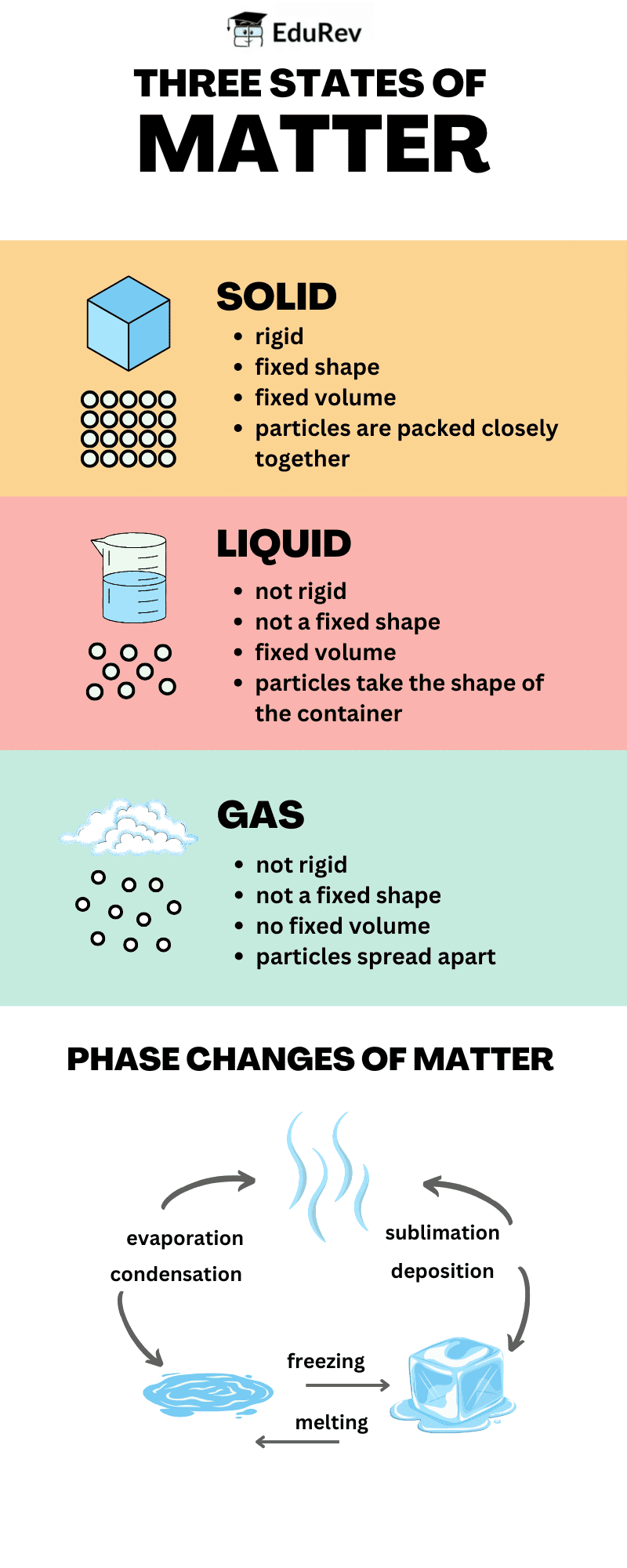Class 3 Exam > Class 3 Notes > Science for Class 3 > Infographics: States of Matter
Infographics: States of Matter | Science for Class 3 PDF Download

The document Infographics: States of Matter | Science for Class 3 is a part of the Class 3 Course Science for Class 3.
All you need of Class 3 at this link: Class 3
|
20 videos|121 docs|32 tests
|
FAQs on Infographics: States of Matter - Science for Class 3
| 1. What are the four main states of matter? |  |
Ans. The four main states of matter are solids, liquids, gases, and plasma. Solids have a definite shape and volume, liquids have a definite volume but no definite shape, gases have neither a definite shape nor volume, and plasma is a high-energy state of matter where electrons are stripped from atoms.
| 2. How do particles behave in each state of matter? |  |
Ans. In solids, particles are closely packed together and vibrate in fixed positions. In liquids, particles are close together but can move around each other, allowing them to flow. In gases, particles are far apart and move freely at high speeds. In plasma, particles are energized and exist as charged ions and free electrons.
| 3. Can matter change from one state to another? |  |
Ans. Yes, matter can change states through processes such as melting, freezing, boiling, condensation, and sublimation. For example, ice (solid) melts into water (liquid), and water can boil to become steam (gas).
| 4. What is the importance of understanding states of matter? |  |
Ans. Understanding states of matter is important because it helps us comprehend how substances interact and change in our daily lives. It is crucial for various scientific fields, including chemistry, physics, and engineering, and plays a vital role in industries such as food, pharmaceuticals, and materials science.
| 5. How can we observe the states of matter in our everyday life? |  |
Ans. We can observe the states of matter in many everyday situations. For instance, ice cubes in a drink represent a solid, water in a glass represents a liquid, and steam from a kettle represents a gas. Observing these changes can help us understand the properties and behaviors of different states of matter.
Related Searches
















